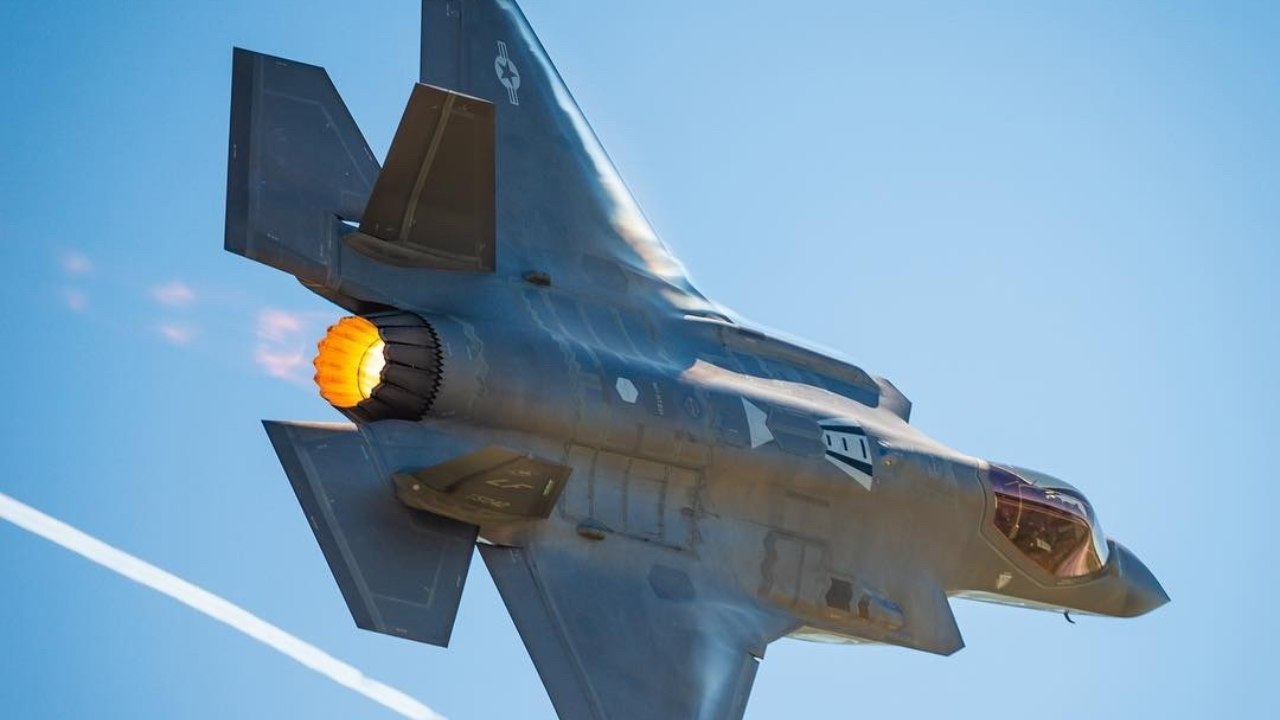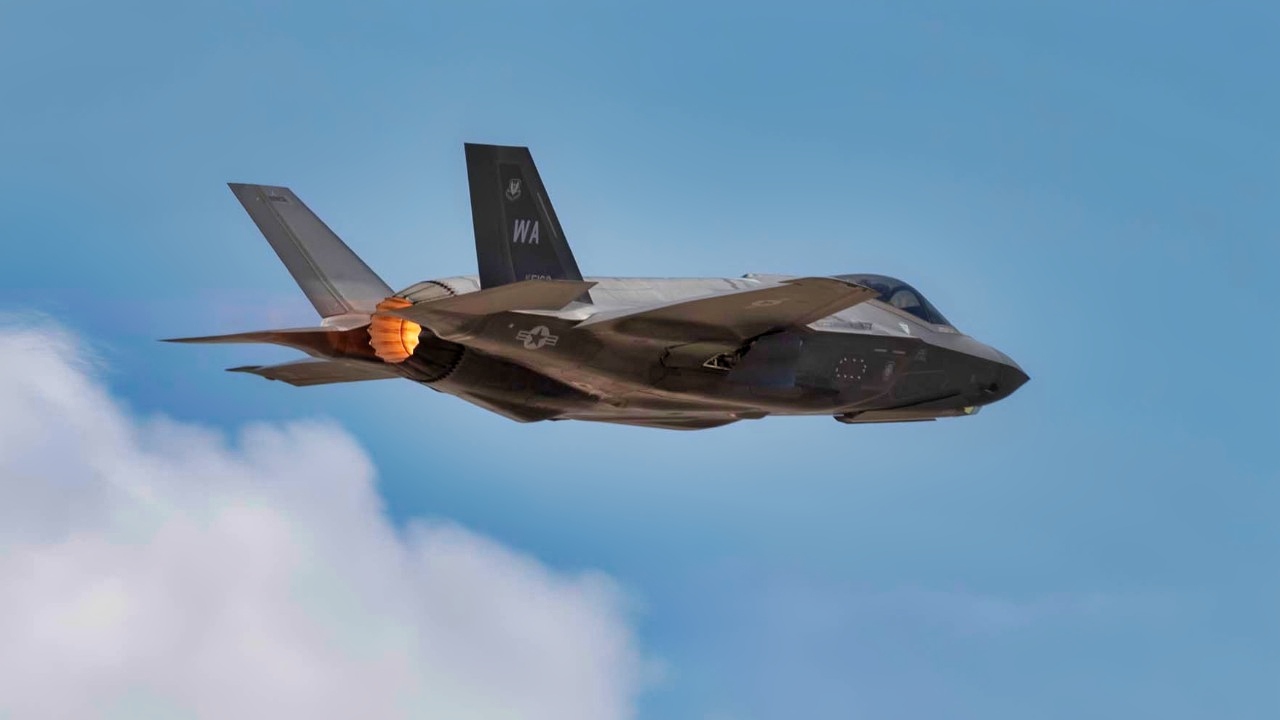Key Points and Summary – After losing the 6th-generation F-47 NGAD contract to Boeing, Lockheed Martin is not protesting. Instead, CEO Jim Taiclet is pitching a “Ferrari” upgrade for the F-35 as a cheaper alternative.
-He claims this “5th-gen-plus” package will use tech from their failed NGAD bid to deliver “80 percent of 6th-gen capability at half the price.”

NGAD. Image Credit: Creative Commons
-Lockheed is reportedly in high-level talks with the Pentagon and White House about this “NASCAR upgrade” concept.
-This new pitch comes even as the F-35’s current Block 4 modernization is now delayed by five years, to 2031, and is $6 billion over budget.
-The plane would be an interesting upgrade built to beat new Russian Su-57 Felon fighters and China’s various new stealth fighter projects.
The “Ferrari” Upgrade For The F-35: Where Is It?
The US Air Force’s Next Generation Air Dominance program contract for the F-47 was awarded to Boeing over Lockheed Martin.
President Trump announced the agreement this past spring, stating that the aircraft will be the key system of systems, which will also include unmanned aerial vehicles (UAVs) that serve as “loyal wingmen.”

(ILLUSTRATION) — An artist illustration shows a flight of unmanned weapons carriers escorted by a sixth generation air dominance fighter during a combat mission over an undisclosed location. Industry Handout photo.
However, the aircraft giant isn’t going to let that detail bother it. Lockheed is exploring the idea of incorporating the technology developed for its competitor’s NGAD into the F-35.
Lockheed Martin claims that the upgrades can provide 80 percent of the capabilities of the F-47 Next Generation Air Dominance fighter at half the cost. This is a significant claim, aimed at keeping the F-35 relevant for decades to come and providing an alternative to the F-47.
The Ferrari Upgrade For the F-35
The F-35 “Ferrari” upgrade is a Lockheed Martin concept to transform the F-35 into a “fifth-gen-plus” fighter by integrating sixth-generation technologies, with a focus on software, sensors, and AI.

Capt. Andrew “Dojo” Olson, F-35 Demonstration Team commander and pilot performs a dedication pass in an F-35A Lightning II during the 2019 Wings Over Wayne Airshow April 27, 2019, at Seymour Johnson Air Force Base, North Carolina. The WOW Airshow marks the third public performance of the F-35 Demo Team’s new aerial demonstration during 2019 airshow season.
Upgrades include enhanced AI-assisted sensor fusion, next-generation weapons, and potential stealth and airframe modifications, such as the use of new materials, coatings, and reshaped inlets.
Other planned features are optional unmanned operations, next-generation electronic warfare, and potential engine improvements, aiming to provide a significant capability boost at a lower cost than a new aircraft.
Going further than just minor modifications, it would give the F-35 a “NASCAR upgrade” by leveraging its base “chassis.” This “5th generation plus” reworking could include new materials, geometries, and countermeasures developed under the NGAD program. We also now know that Lockheed will not formally protest Boeing’s winning of the NGAD combat jet competition.
Lockheed Using The Boeing Tactic
Lockheed’s CEO Jim Taiclet announced that the world’s largest defense contractor will not protest the Air Force’s decision to award the Next Generation Air Dominance (NGAD) program to Boeing. Instead, Lockheed will pull its complete focus toward enhancing its flagship stealth fighter jet in the hopes of enticing the Pentagon with a less expensive alternative to a sixth-generation fighter.
“We’re basically going to take the [F-35] chassis and turn it into a Ferrari,” Taiclet said. “It’s like a NASCAR upgrade, so to speak, where we would take the F-35 [and] apply some of those co-funded technologies both from NGAD and the F-35 program.
“My challenge here on my aeronautics team is, let’s get 80 percent of six-gen capability at half the price. And that’s something that — these are engineers, you know, they wouldn’t have agreed to this if they didn’t think there was a path to get there,” he added.

A U.S. Air Force F-35A Lightning II takes off for a mission during U.S. Air Force Weapons School Integration (WSINT) at Nellis Air Force Base, Nevada, June 3, 2025. WSINT serves as the culminating exercise for U.S. Air Force Weapons School students, bringing together air, space, and cyber forces in realistic, mission-critical training scenarios that mirror the complexities of modern warfare. Conducted twice a year, the integration event tests multi-domain operations and strengthens joint force interoperability, enhancing combat readiness across the spectrum of military operations over the Nevada Test and Training Range. (U.S. Air Force photo by William R. Lewis)
Nellis AFB; ACC; Las Vegas; Nellis Air Force Base; contentcollectionweek; readiness; US Air Force Weapons School; WSINT
This tactic of Lockheed is nothing new. It’s the same kind of marketing argument for their F-35 versus the NGAD/F-47 that Boeing used when pitching the Super Hornet against the Joint Strike Fighter program in 2001.
It was also used when McDonnell Douglas and General Dynamics were pitching improved F-15 and F-16 variants as cheaper alternatives to the ATF in the 1990s.
However, if they were able to pull this off, it would be an enormous upgrade for the F-35, keeping the assembly line rolling for years to come.
There are already 1,250 + F-35 aircraft operational in the world. This would provide many of the countries involved in the program with access to the fifth-generation + (or 5.5) technology, upgrading their air fleets against their enemies.
Providing New Technology
Using the term “chassis” for the F-35 suggests that Lockheed has plans to upgrade the aircraft, possibly in radical ways.
Lockheed has already stated that the F-35 has strong potential in the US Air Force’s Collaborative Combat Aircraft program.
Taiclet also spoke about the emergence of passive infrared sensors as a key feature on fighter aircraft. Russian and Chinese designs have incorporated these for some time, and the same can be said for the Eurofighter Typhoon and Dassault Rafale. US designs, however, are being equipped with podded infrared search and track (IRST) sensors, as they were not originally designed with them.
Export Sales Would Boom
Many of our allies and partners have already invested in the F-35 program, and 20 countries have purchased it. And why wouldn’t they want a “NASCAR” upgrade package for their aircraft?
Taiclet said that Lockheed would want to have the option to export the more advanced fifth-generation-plus models to partner nations, but that would be up to Washington, which has the final say on what can be exported.
“Our goal is to make as much of this capability that we can [export],” Taiclet said, while adding, “We try to design [technology] in a way that’s hopefully an easier decision for exportability than a harder one.”
“Eventually, there’ll be 3,500 of those [F-35] chassis out there at various stages of technology and capability [worldwide],” Taiclet said. “We think we can get most of the way to sixth-gen at half the cost.”
“Value is important and maybe as important as or more important than the highest technology available.
“It’s got to be scalable, it’s got to be affordable, it’s got to work every time. And so that’s what we’re after.”
Block 4 Upgrades For the F-35 Delayed
The F-35 Block 4 upgrade is a significant modernization effort aimed at enhancing the jet’s weapons, sensors, and electronic warfare capabilities, although it has been delayed and has gone over budget.
Key improvements include increased missile capacity, enhanced sensors and target recognition, advanced electronic warfare capabilities, and improved interoperability. These upgrades rely on the integration of the new Technology Refresh 3 (TR-3) computing infrastructure, which is a prerequisite for Block 4.
“Block 4 upgrades add new and enhanced capabilities to ensure our platform remains relevant against rapidly evolving threats,” said Lt. Gen. Michael Schmidt, F-35 Program Executive Officer.
“Much like a new mobile cell phone or personal computer, TR-3 will host new Block 4 capabilities and applications with significantly more computing power and memory than the legacy infrastructure.”
However, the Block 4 upgrades are delayed an additional two years from the projected 2029 timeframe until 2031, according to the Government Accounting Office (GAO).
Lockheed In Talks With The Pentagon
In September, Taiclet stated that Lockheed and the Pentagon were engaged in talks about implementing the “Ferrari” package for the F-35.
“There’s a very active engagement at an extremely high level with the Department of Defense, and I expect it’ll be taken to the White House sometime soon, hopefully, to consider this kind of concept,” Jim Taiclet said at a conference.

A U.S. Air Force F-35A Lightning II assigned to the F-35A Lightning II Demonstration Team performs a tactical pitch maneuver during a rehearsal flight over Hill Air Force Base, Utah, Jan. 11, 2023. The F-35 Demo Team performs rehearsal flights regularly to maintain flying certifications and to uphold and maintain their mission and Air Force recruiting standards. (U.S. Air Force photo by Staff Sgt. Kaitlyn Ergish)
“We’ve gotten encouraging feedback … There’s significant interest in the government about discussing aircraft modernization writ large, all the way up to the administration level, the White House level, and we’re in the middle of that with them, and we’re getting heard. We’re hearing back, and it’s pretty active.”
Taiclet estimates that about 1,000 to 1,500 of the 2,500 F-35s that have yet to be delivered could be offered as the fifth-gen plus or “Ferrari” version.
He believes that this can be done even if export restrictions prohibit international buyers from purchasing that configuration. Upgrades for those jets could include new weapons, an improved stealth coating, and potentially a more advanced engine, he said.
About the Author: Steve Balestrieri
Steve Balestrieri is a National Security Columnist. He served as a US Army Special Forces NCO and Warrant Officer. In addition to writing on defense, he covers the NFL for PatsFans.com and is a member of the Pro Football Writers of America (PFWA). His work was regularly featured in many military publications.
More Military
China’s H-20 Stealth Bomber Has a Message for the U.S. Air Force
China’s New J-35 Stealth Fighter Has a Message for the U.S. Air Force
China Is Studying the Ukraine War to Become a Drone Superpower
The Road to a China-America Nuclear War
China Could Fire Mach 6 Hypersonic Missiles from Bombers to Sink Navy Aircraft Carriers










